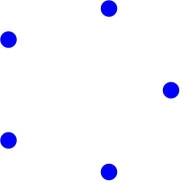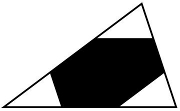PRIMES-USA
PRIMES-USA: A new MIT program for talented math students from across the country.
I’ve been working as a math coordinator for RSI, the most competitive summer program for high school juniors. RSI arranges for these select students to do scientific research. I only work with kids who do math, and usually we have a dozen of them. Every student has an individual mentor, usually a graduate student, with whom they meet daily. I supervise all the projects and meet with each high school student about once a week. My job was described as “going for the biggest impact”: when the project is in trouble, I jump in to sort it out; when the project is doing well, I push it to further limits.
RSI is a great program: kids enjoy it and we produce interesting research. My biggest concern is that the program is too short. The kids do math for five weeks and they usually approach a good result, but at the end of RSI we generally see just a hint of what they could truly achieve. Kids who continue to work on their own after the program ends are more successful. Unfortunately most of the students stop working at the end of the program just as they are approaching a big theorem.
I discussed this dissatisfying trend with Pavel Etingof and Slava Gerovitch and we decided to do something about it. Pavel and Slava conceived and found funding for a new program called PRIMES that is similar to RSI, but runs for a year. From February through May, PRIMES students meet with their mentors weekly. In fact, we require on the application that the students commit to coming to MIT once a week, thereby limiting us to local students. Theoretically, someone from Detroit with a private jet who can fly to MIT weekly would be welcomed.
Before the first year, we wondered whether the smaller pool of local students would be weaker than national and international RSI students. To our delight, that wasn’t the case. In the first year we got fantastic students. One explanation is that PRIMES is much more flexible. We do not mind when our students go to IMO in the summer or to math camps or when they go away on vacation with their parents. As a result, we get students who would never apply to RSI because of their summer schedules. Our PRIMES students have won so many prizes that I do not remember them all. We post our successes on the website.
Our success in PRIMES suggests that there are likely many talented kids in other states who never even apply to RSI because of a scheduling conflict. This led us to try to adapt PRIMES to national needs. So we created a new program called PRIMES-USA that will accept students from across the country. We will work with them through Skype. These students must commit to travel to MIT for a PRIMES conference in May. Because this is our pilot program, we will only accept five students.
Share:
